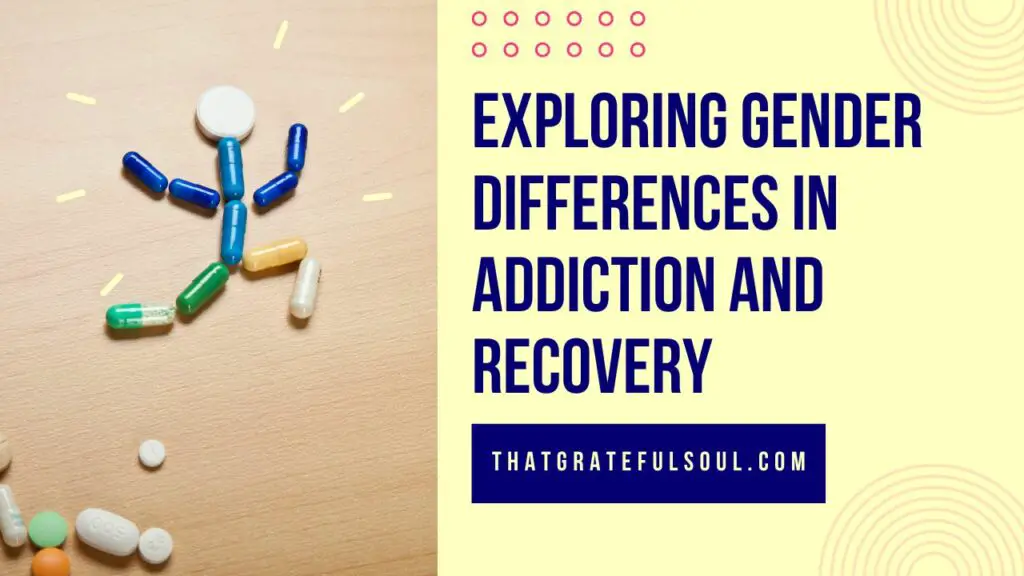The influences of gender differences on substance use, addiction, and recovery are significant yet often overlooked.
This article seeks to shed light on how gender plays a unique role in addiction and recovery, highlighting the necessity of gender-responsive treatment strategies[1].

-
Save
Table of Contents
The Influence of Gender on Substance Use and Addiction
Gender plays a pivotal role in both substance use and the development of addiction.
1. Substance Use Patterns
Men are generally more likely than women to use nearly all types of illicit drugs, leading to a higher likelihood of emergency department visits or overdose deaths. However, women tend to escalate from initial use to addiction more quickly[2].
2. Biological Differences
Biological differences between genders, including hormonal fluctuations and body composition, can impact how drugs are metabolized and experienced.
For instance, women may become intoxicated more quickly than men after consuming the same amount of alcohol[3].
3. Sociocultural Factors
Sociocultural factors can greatly influence the gender disparity in substance use. The stigma around substance misuse can be more pronounced for women, potentially affecting their likelihood to seek help[4].
Gender Differences in Addiction Recovery
Gender differences in recovery patterns necessitate individualized approaches to treatment.
1. Seeking Treatment
Women may be less likely to seek addiction treatment due to barriers like familial responsibilities and the lack of gender-specific treatment options.
On the other hand, men might be more prone to seeking treatment but may face challenges related to social norms and expectations[5].
2. Treatment Response
Men and women can respond differently to treatment strategies, underlining the need for gender-responsive interventions.
For instance, women may respond more favorably to therapies that incorporate social support and coping mechanisms for stress[6].
Gender-Responsive Treatment Strategies
Recognizing the gender differences in addiction and recovery is key to implementing effective, gender-responsive treatment strategies.
1. Gender-Specific Treatment Programs
Gender-specific treatment programs can provide a more comfortable environment for individuals to express themselves freely, which is particularly beneficial in group therapy contexts[7].
2. Addressing Gender-Specific Issues
Treatment strategies should address gender-specific issues, such as trauma in women or societal pressure in men, to increase the likelihood of long-term recovery[8].
Conclusion
Understanding the nuances of gender differences in addiction and recovery is critical to tailor effective treatment strategies. Through gender-responsive interventions, we can create an inclusive therapeutic landscape that caters to the unique needs of both men and women.
References:
[1]: National Institute on Drug Abuse. “Sex and Gender Differences in Substance Use.”
[2]: Substance Abuse and Mental Health Services Administration. “Results from the 2013 National Survey on Drug Use and Health: Summary of National Findings.”
[3]: The American Journal on Addictions. “Sex differences in alcohol metabolism and susceptibility.”
[4]: Social Work in Public Health. “Gender differences in public and private drinking contexts: a multi-level GENACIS analysis.”
[5]: Substance Abuse and Mental Health Services Administration. “TIP 51: Substance Abuse Treatment: Addressing the Specific Needs of Women.”
[6]: The American Journal of Drug and Alcohol Abuse. “Sex differences in addiction and response to exercise intervention: From human to animal studies.”
[7]: Journal of Substance Abuse Treatment. “Gender differences in substance dependence and abuse: The role of program engagement.”
[8]: The American Journal of Psychiatry. “Gender Differences in Trauma and Posttraumatic Stress Disorder: A

